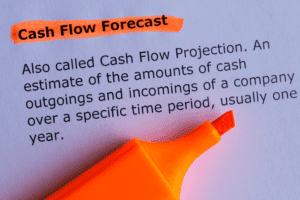Mastering Schedule K-1: A Complete Guide to Tax Filings

It acts as a pass-through document, meaning it puts the responsibility on the recipients to report their share of the entities’ financial activities on their personal tax returns. If the IRS taxes your business as a partnership, you’ll fill out Form 1065 for the organization and the accompanying Schedule K-1 for each partner. This includes law firm chart of accounts all limited partnerships, general partnerships, and limited liability companies (LLCs) filing as a partnership.
The Foreign National Must Be the Fiance(e) of a U.S. Citizen
- The deadline to issue K-1s is March 15th, however, if an extension is filed by the partnership, LLC, or S Corporation, the due date may be extended to September 15th.
- Box 1 will reflect your share of Ordinary Income from the activities of the partnership.
- A K-1 is used to report a beneficiary’s, partner’s, or shareholder’s share of income, credits, deductions, and more on your personal Income Tax Return.
- Your K-1 as an S corp shareholder reports the percentage of taxable income, losses, deductions, and credits you’re responsible for from the organization.
- Mistakes in this section can cause complications for both the partnership and the individual partners, so take the time to verify the accuracy of the information provided.
This depends on the type of income and the governing documents of the trust or estate. For example, a trust might pass through dividends, interest, and other income to the beneficiaries but pay tax at the trust level on capital gains. The K-1 forms used recording transactions by the three entities (partnerships, S-corporations, and trusts) vary slightly in the way they look but they all have the same purpose. They report to the IRS, and individual partners, shareholders, and beneficiaries, the amounts of income, losses, deductions, credits, and other distributions they may have received. A K-1 tax form is an IRS form used to report the income, deductions, and credits of partnerships, S corporations, estates, and trusts.

Part III, Beneficiary’s Share of Current Year Net Income

We are compensated in exchange for placement of sponsored products and services, or by you clicking on certain links posted on our site. While we strive to provide a wide range of offers, Bankrate does not include information about every financial or credit product or service. Those who receive a K-1 must report the relevant financial information on their annual tax k1 definition return or they risk running afoul of tax laws.

K-1 form for trusts and estates
Attention to detail is vital here, as any mistakes or omissions may lead to delays or even penalties. According to the IRS, organizations should provide K-1s to individuals by March 15 for organizations that use the calendar year as their tax year. Otherwise, they are due to individuals by the 15th day of the third month after the end of the tax year. This is the same date partnership and S-corp returns are due to the IRS. Finally, in Part III, you’ll add your share of the income or loss and any deductions or credits. It sends its unitholders a Schedule K-1 federal tax form around mid-March.

Where to Get a Schedule K-1
Schedule K-1 is an Internal Revenue Service (IRS) tax form issued annually to the individuals in business partnerships. The purpose of Schedule K-1 is to report each partner’s share of the partnership’s earnings, losses, deductions, and credits. It serves a similar purpose for tax reporting as one of the various Forms 1099, which report dividend or interest income from securities or income from the sale of securities. Schedule K-1 forms can be used to report a wide variety of income including ordinary business income, interest income, dividends, rental income, royalty income and capital gains.
- The K-1 forms used by the three entities (partnerships, S-corporations, and trusts) vary slightly in the way they look but they all have the same purpose.
- The next three items in box 4, will be your share of guaranteed payments.
- Depending on whether the ordinary business income is derived from a passive activity or not it will affect where the income is reported.
- A Schedule K-1 is a federal tax form that pass through entities like partnerships and S corporations and sometimes trusts and estates send to their partners, shareholders, or beneficiaries.
- All pass-through entities, including partnerships, LLCs, and S Corporations must issue K-1s to individual partners and shareholders.
- In the case of a business that functions as a partnership, the partners should pay the taxes on behalf of the company.
- The information in our reviews could be different from what you find when visiting a financial institution, service provider or a specific product’s website.
Schedule K-1 Tax Form Explained: Your Ultimate Guide
- Just check this over and make sure you recognize the partnership’s name and identifying information.
- Our latest Future of Professionals Report examines how AI technology is transforming professional work, highlighting key findings and recommendations.
- Item H2 and I1 is necessary if the partner is a disregarded entity.
- This is not for the investor to worry about; the issuing corporation must elect to send you the correct version of the K-1 depending upon in which state you reside.
The two-year rule specifies that a couple applying for a K-1 fiance(e) visa must have met in person within the two years prior to the time they apply, unless they fall within an exception. Exceptions include extreme hardship to the U.S. citizen or if the foreign national has a strong cultural or religious prohibition against meeting before marriage. Just check this over and make sure you recognize the partnership’s name and identifying information. In other words, make sure that they sent you the K-1 for the right investment vehicle. If there are mistakes, notify the issuer and they will have to issue an amended K-1 to you.
